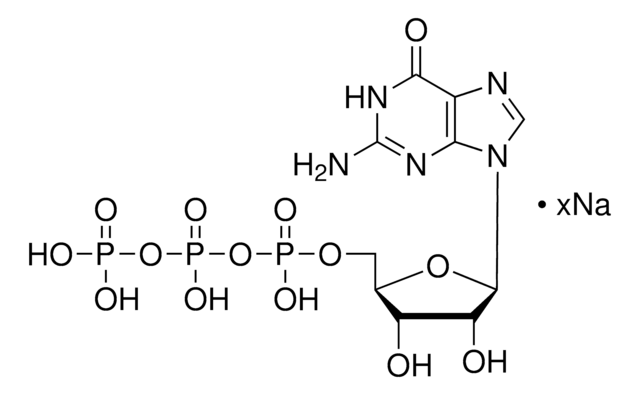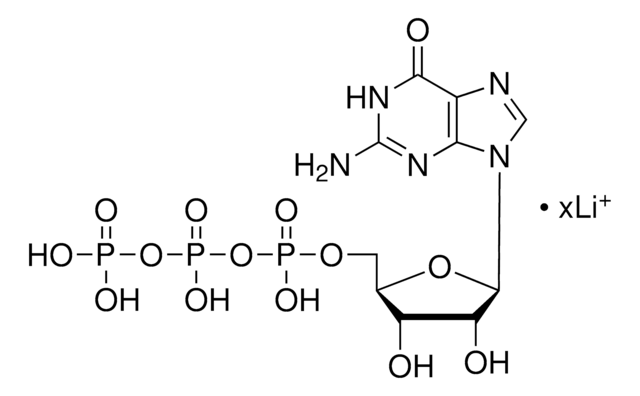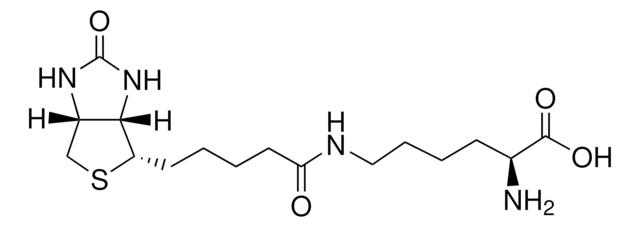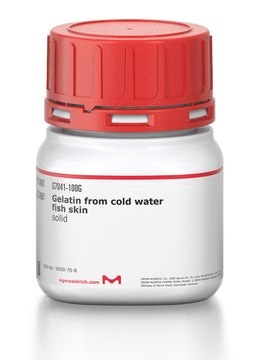Wszystkie zdjęcia(1)
Kluczowe dokumenty
M7273
Anti-Microtubule-Associated Proteins (MAPs) antibody produced in rabbit
whole antiserum
Zaloguj sięWyświetlanie cen organizacyjnych i kontraktowych
About This Item
Polecane produkty
pochodzenie biologiczne
rabbit
Poziom jakości
białko sprzężone
unconjugated
forma przeciwciała
whole antiserum
rodzaj przeciwciała
primary antibodies
klon
polyclonal
zawiera
15 mM sodium azide
reaktywność gatunkowa
mammals
metody
western blot: 1:200
numer dostępu UniProt
Warunki transportu
dry ice
temp. przechowywania
−20°C
docelowa modyfikacja potranslacyjna
unmodified
informacje o genach
human ... MAP2(4133) , MAPT(4137)
mouse ... Mapt(17762) , Mtap2(17756)
rat ... Map2(25595) , Mapt(29477)
Opis ogólny
Białko związane z mikrotubulami 2 (MAP2) jest białkiem neuronalnym. Należy do rodziny MAP2/Tau. Gen ten znajduje się na ludzkim chromosomie 2q34-q35. MAP2 jest obecne w neuronach. MAP2 jest głównym białkiem związanym z mikrotubulami w tkance mózgowej. Istnieją dwie główne klasy stabilnych termicznie MAP; dwie są podobnej wielkości o pozornej masie cząsteczkowej 280 kDa (MAP2a i MAP2b), a trzecia o niższej masie cząsteczkowej 70 kDa (MAP2c).
Specyficzność
Reaguje z dwiema głównymi klasami stabilnych termicznie MAP (MAP2 i τ). Nie reaguje z MAP1 ani tubuliną.
Immunogen
stabilne termicznie MAP przygotowane z bydlęcego mózgu.
Zastosowanie
Przeciwciało anty-Microtubule-Associated Proteins (MAPs) wytwarzane u królików zostało użyte w:
- znakowaniu immunofluorescencyjnym
- immunohistochemii
- immunoprecypitacji
- barwienie immunofluorescencyjne
- western blotting
Działania biochem./fizjol.
Białko związane z mikrotubulami 2 (MAP2) oddziałuje z mikrotubulami w celu utrzymania struktury dendrytów. Odgrywa główną rolę we wspieraniu cytoszkieletu aktynowego w kolcach, wiążąc i zarodkując aktyny nitkowatej (f-aktyny) w celu modulowania morfologii kolców. Mikrotubule funkcjonują jako elementy strukturalne i ruchowe w mitozie, transporcie wewnątrzkomórkowym, ruchu wici i w cytoszkielecie.
Oświadczenie o zrzeczeniu się odpowiedzialności
O ile nie określono inaczej w naszym katalogu lub innej dokumentacji firmy dołączonej do produktu(-ów), nasze produkty są przeznaczone wyłącznie do użytku badawczego i nie mogą być wykorzystywane do żadnych innych celów, w tym między innymi do nieautoryzowanych zastosowań komercyjnych, zastosowań diagnostycznych in vitro, zastosowań terapeutycznych ex vivo lub in vivo lub jakiegokolwiek rodzaju konsumpcji lub zastosowania u ludzi lub zwierząt.
Ta strona może zawierać tekst przetłumaczony maszynowo.
Nie możesz znaleźć właściwego produktu?
Wypróbuj nasz Narzędzie selektora produktów.
Kod klasy składowania
10 - Combustible liquids
Klasa zagrożenia wodnego (WGK)
WGK 3
Temperatura zapłonu (°F)
Not applicable
Temperatura zapłonu (°C)
Not applicable
Wybierz jedną z najnowszych wersji:
Masz już ten produkt?
Dokumenty związane z niedawno zakupionymi produktami zostały zamieszczone w Bibliotece dokumentów.
Dynamic Instability of Microtubules Assembled from Microtubule-Associated Protein-Free Tubulin: Neither Variability of Growth and Shortening Rates nor ?Rescue? Requires Microtubule-Associated Proteins
Billger MA, et al.
Biochemistry, 35(42), 13656-13663 (1996)
The MAP2/Tau family of microtubule-associated proteins
Dehmelt L, et al.
Genome Biology, 6(1), 1-10 (2005)
Increased Phosphorylation of Ca/Calmodulin-dependent Protein Kinase II and Its Endogenous Substrates in the Induction of Long Term Potentiation
Fukunaga K, et al.
Test, 270(11), 6119-6124 (1995)
Expression of multiple functional chemokine receptors and monocyte chemoattractant protein-1 in human neurons
Coughlan CM, et al.
Neuroscience, 97(3), 591-600 (2000)
J H Holstein et al.
British journal of pharmacology, 154(5), 1055-1062 (2008-05-06)
The immunosuppressive drug rapamycin (RAPA) prevents rejection in organ transplantation by inhibiting interleukin-2-stimulated T-cell division. Rapamycin has also been suggested to possess strong anti-angiogenic activities linked to a decrease in production of vascular endothelial growth factor (VEGF). Angiogenesis and VEGF
Nasz zespół naukowców ma doświadczenie we wszystkich obszarach badań, w tym w naukach przyrodniczych, materiałoznawstwie, syntezie chemicznej, chromatografii, analityce i wielu innych dziedzinach.
Skontaktuj się z zespołem ds. pomocy technicznej




![Guanosine 5′-[γ-thio]triphosphate tetralithium salt ≥90% (contains < 10% GDP, HPLC), powder](/deepweb/assets/sigmaaldrich/product/structures/131/514/e3025b6a-cb52-4818-b20f-98efac485c1a/640/e3025b6a-cb52-4818-b20f-98efac485c1a.png)



